HEMI® Barracuda Special Order
B029: THE ULTIMATE SUPER STOCK!
— PLYMOUTH’S SUPER STOCK PACKAGE CAR FOR 1968
— CODE NAMED BO29 AND RESERVED FOR DRAG RACING USE
— HURST PERFORMANCE INSTALLED THE 426 RACE HEMI® ENGINES
The genesis for the idea behind this story came as a result of an informative two-and-one-half-hour-long phone conversation with Bob Tarrozi, Chief Engineer for the 1968 Super Stock race program. Tarrozi shared with me the whole story, the challenges he ran into with engineering the car, which was known as “The Mule” and it’s outlined in his available book, listed below. In addition, he explains his dealings with the personalities he worked with on the project, which included Bob Cahill, Dick Maxwell and Dale Reeker, plus others in the racing department. His book, Turk – The Lives I’ve Lived, is a great reference to the project and also features a lot more Mopar® insider stories.
THE FIRST CAR
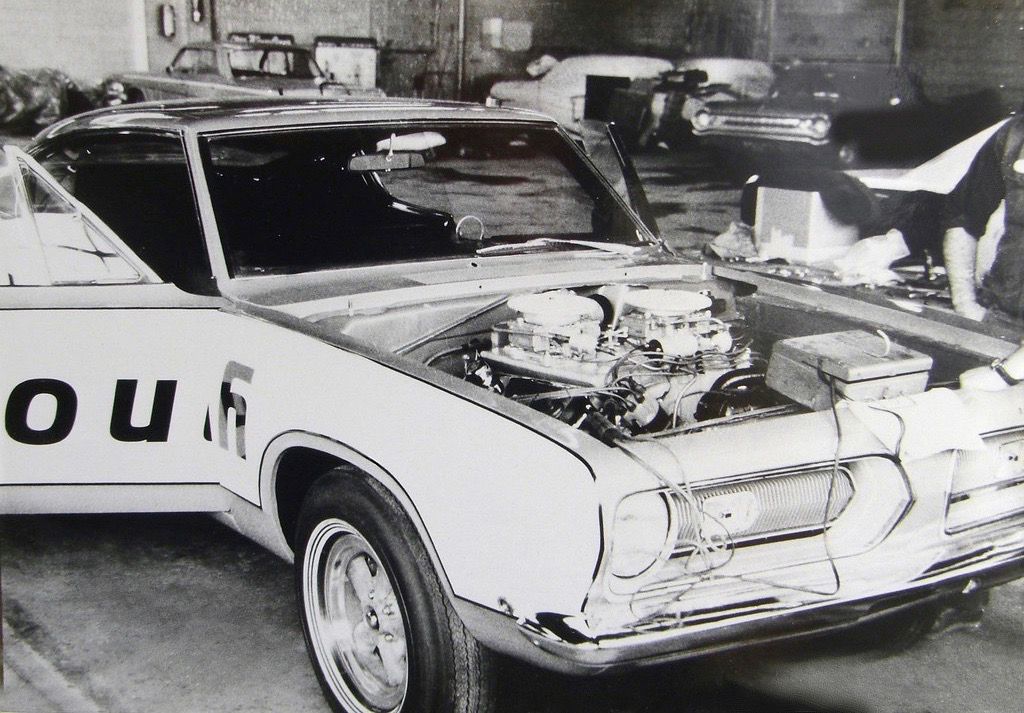
When working inside the Race Group in late 1967, the entire HEMI® A-body car program was his, except that he didn’t have much to do with engine development. He had an analytical approach, especially when it came to taking weight out of the car, which was part of it, as was developing a rear suspension system that could handle the power of the race HEMI engine that would be the source of power. He and Larry Nolton, a mechanic from the Woodward Garage, put that first car together. The general idea was to provide Plymouth racers with a suitable, fast and well-built Barracuda to compete in the SS/B and SS/BA (automatic) NHRA classes. The individual racers would get their cars and after blueprinting the engine, and selecting their camshaft design, it would be ready for competition.
It was January of 1968 when the mule was taken west to the California drag strip, Irwindale. An incredible amount of engineering had gone into this prototype car, and at the track there was some thrashing and detail work performed. The engine was very close to the previous “A990” HEMI engine from 1965 package cars, only now with cast iron heads rather than aluminum. The mule had a race-prepped TorqueFlite® and one thing that Tarozzi had noticed, and he was the test driver, was as it went down the track at speed, the front end had a tendency to “dance around” with a toe-steer problem. It wanted to go left-right-left at full speed down the quarter-mile. A special steering arm was designed that solved the problem. The “Super Stock” leaf spring that Tarozzi designed worked fantastic, with six-cylinder torsion bars fitted up front for maximum weight transfer abilities. The mule car was deemed a success and from there, an agreement with Hurst Performance was made where Barracudas and Darts were sent to Hurst for conversion.
FIRST MAGAZINE EXPOSURE
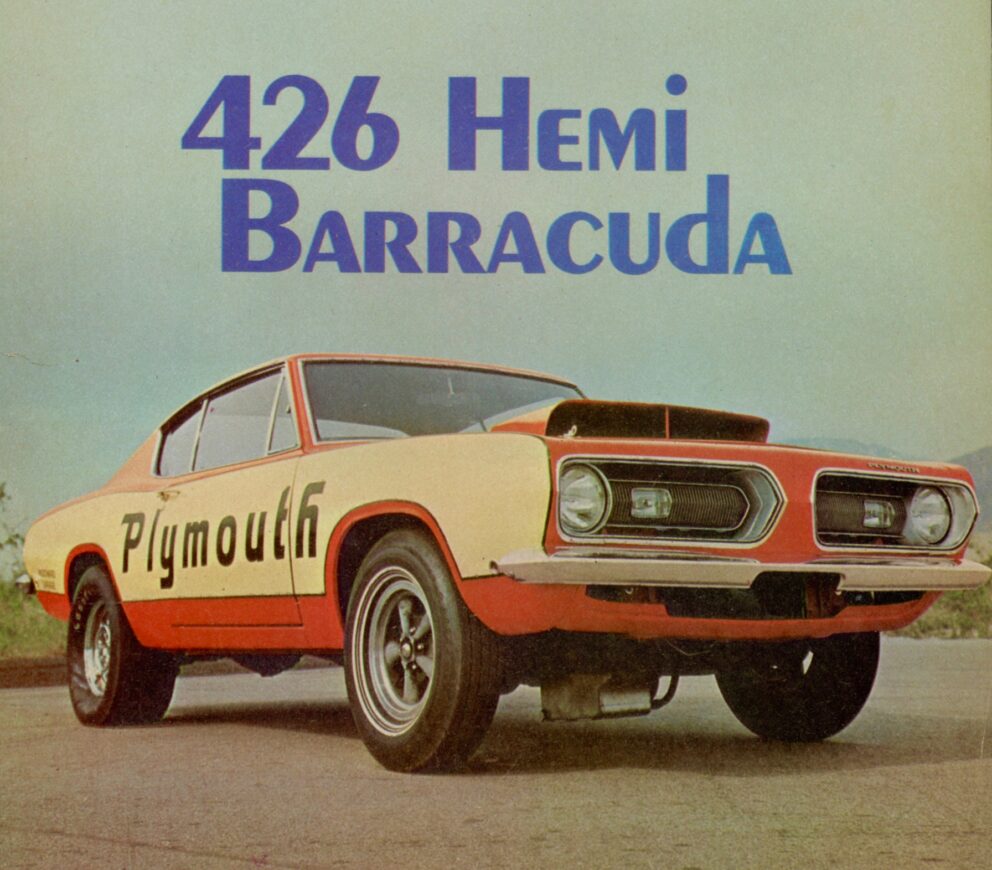
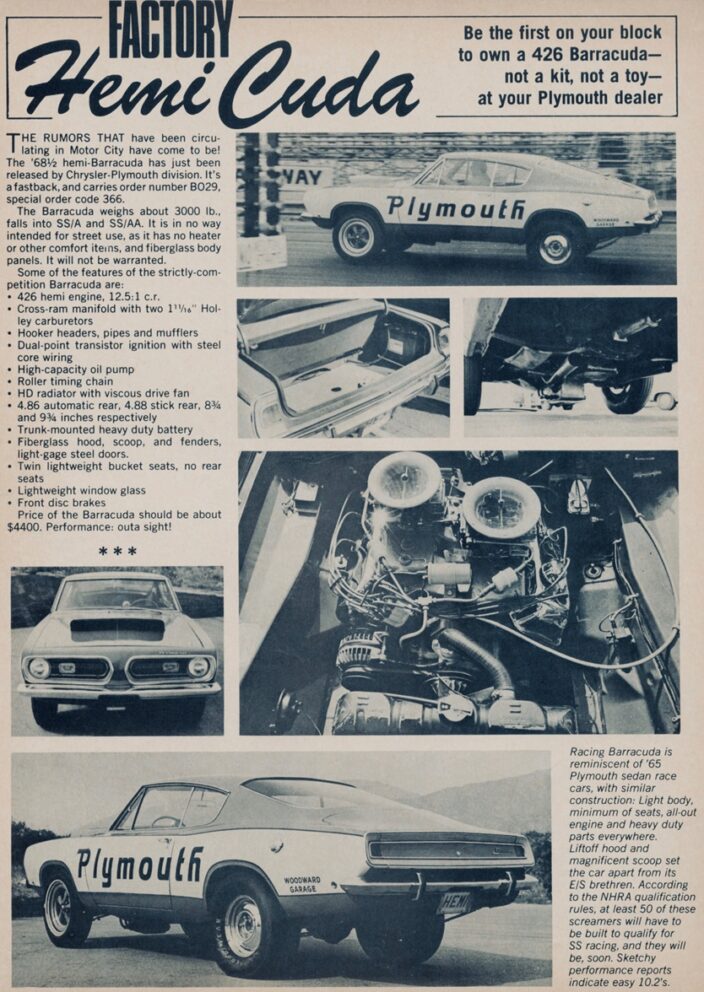
Bob Tarozzi was the driver for the “mule” car when it ran for the first 1/4-mile testing on the Irwindale track, Saturday, February 10, 1968. When these B029 cars first hit the drag strip, they were ran, as per NHRA category at the time, “Super Stock/B and Super Stock B/Automatic” when the class records were: SS/B 11.05 @ 127.29 mph, SS/BA 11.25 @ 125.04 mph. Before too long, the ’68 HEMI package cars were moved to the SS/A and SS/AA classes because of their much quicker and faster times.
Early press reports on the car detailed the features of the car, listed it as an SS/A and SS/AA contender, and based on the Irwindale test session, it was stated that “easy” 10.2-second times were possible. If there was a list of the “Skunkworks Team” that was responsible for the car from start to finish, it would be listed as follows: Dick Maxwell, Tom Hoover, Bob Tarozzi, Ted Spehar, Dan Knapp, Larry Knowlton, John Bauman, Dan and Ron Mancini, Richard Chrysler, Tom Tignanelli and Jerry Gross.
How it worked in early 1968 was like this: The Chrysler/Plymouth dealers were advised that a new performance vehicle was being released early in the year (in very limited numbers) and these were no ordinary cars, they were special-built from the word go and were not intended for regular passenger car use.
Here’s how the official announcement letter, dated February 20, 1968, was worded:
To: All Plymouth Dealers
Subject: 1968 HEMI Barracuda Super Stock
The Chrysler-Plymouth Division offers for the 1968 models a 426 HEMI-Powered Barracuda Fastback for use in supervised acceleration trials. These cars will weigh approximately 3,000 pounds and have been designed to meet the 1968 specifications of the major sanctioning drag strip organizations.
The HEMI-Powered Barracudas will be available through production in limited quantities in March. To order this vehicle, use the Barracuda Order Form and specify Body Code BO29 and Transmission Code, either 4 Speed Manual, Code 393, or Automatic, Code 395. No other specifications are necessary.
Description of Components
- 426 Cu. In. 8-cylinder engines with dual 4-barrel carburetors-12.5 to 1 compression ratio
- Cross Ram Intake manifold
- 1 11/16″ x 1 11/16″ Holley carburetors
- Competition Hooker headers, exhaust pipes, and mufflers.
- High capacity oil pump.
- Roller timing chain (reduced timing chain stretch for more consistent engine performance).
- Mechanical valve gear.
- Dual breaker distributor.
- Transistor ignition.
- Metal core type ignition wires.
- Unsilenced air cleaners.
- Deep groove fan drive pulleys.
- Heavy-duty radiator.
- Aluminum seven-blade fan equipped with viscous drive.
- Special offset 15″ rear wheels.
- Chrysler-built 8 3/4″ large stem pinion gear set, and heavy-duty axle shafts with automatic transmission (4.86 axle ratio).
- Dana-built 9 3/4″ heavy-duty axle with manual transmission (4.88 axle ratio).
- Sure-Grip differential.
- 135 Amp. Hr. battery (located in rear compartment).
- Heavy-duty high control rear suspension.
- Front disc brakes 41/2″ Bolt Circle.
- Fiberglass front fenders.
- Fiberglass hood with scoop.
- Lightweight steel doors.
- Lightweight front bumper.
- Lightweight side window glass.
- High capacity fuel lines.
- Business coupe interior (2 bucket seats – no rear seat).
For Manual Transmission Only
- Special heavy-duty 10 1/2″ clutch and flywheel.
- Safety steel clutch housing.
- Competition “Slick Shift” 4-speed transmission.
- Hurst remote mounted floor-shift unit with reverse lockout.
For Automatic Transmission Only
- High stall speed torque converter (large drive lugs and 7/16″ diameter attaching screws).
- Heavy-duty manual shift TorqueFlite transmission.
- Hurst floor-mounted shift unit.
Please Note – The following items are deleted on this body type:
- Heater, Body Sealer and Sound Deadeners, Silence Pads, Outside Mirrors, Right Side Seat Belt and Body Color Paint.
It took some inner fender “massaging” to squeeze in the mighty 426-cid “elephant” into the Chrysler “A-body” compacts, as there was some hammer work done (passenger’s side shock tower) to clear the valve cover, plus the brake master cylinder received a special offset mounting (moving away from engine) in order to fit, with flexible brake lines added for quick removal to facilitate driver’s side valve cover dismounting. It was obvious these cars were not for running to and from the grocery store – they were all-out competition vehicles!
A minimum of 50 cars were required to be built (each, Plymouth and Dodges) – per the NHRA rules – and they were sent to the nearby Hurst Performance Research facility in Madison Heights, Michigan, for the mods. The engines were “prepped” at the Chrysler Marine and Industrial Plant located in Marysville, Michigan. The cars were shipped from the Hamtramck Plant to the Hurst Performance Facility located at 1191 East Eleven Mile Road, Madison Heights, Michigan. Dick Maxwell coordinated the conversions at Chrysler while Richard Chrysler at Hurst oversaw the conversion work. The cars were delivered to dealers coated in primer paint with the various fiberglass body components finished in raw gel coat. According to research, there were a total of 72 B029 cars produced. Because of their current value, the vast majority of these cars raced today were constructed with regular Barracuda body shells, then crafting them into the highly modified all-out competition cars they are today.
FIRST CAR WENT TO SOX & MARTIN TEAM
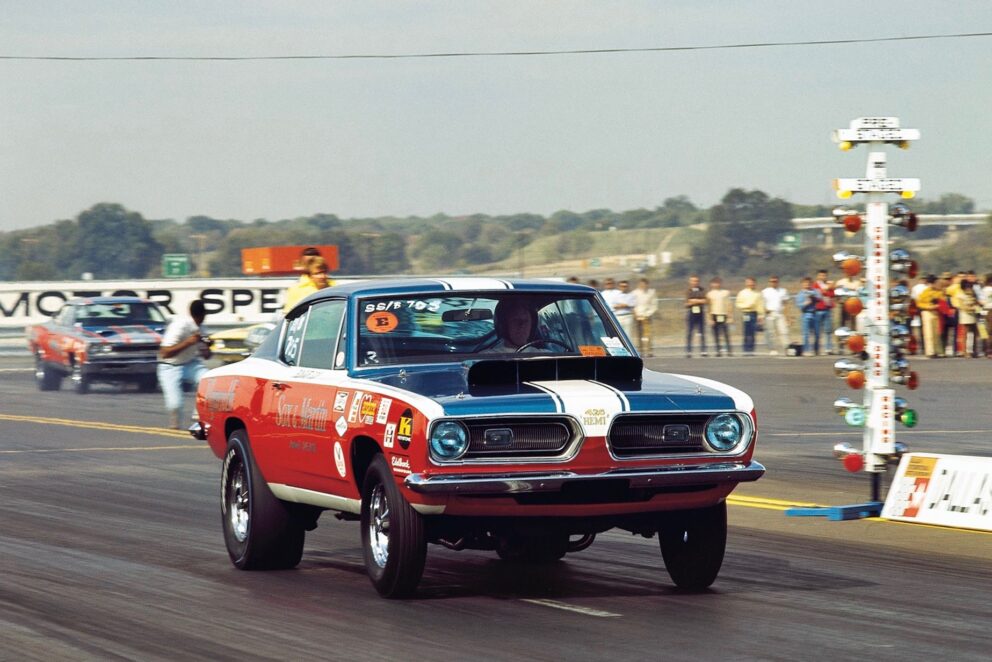
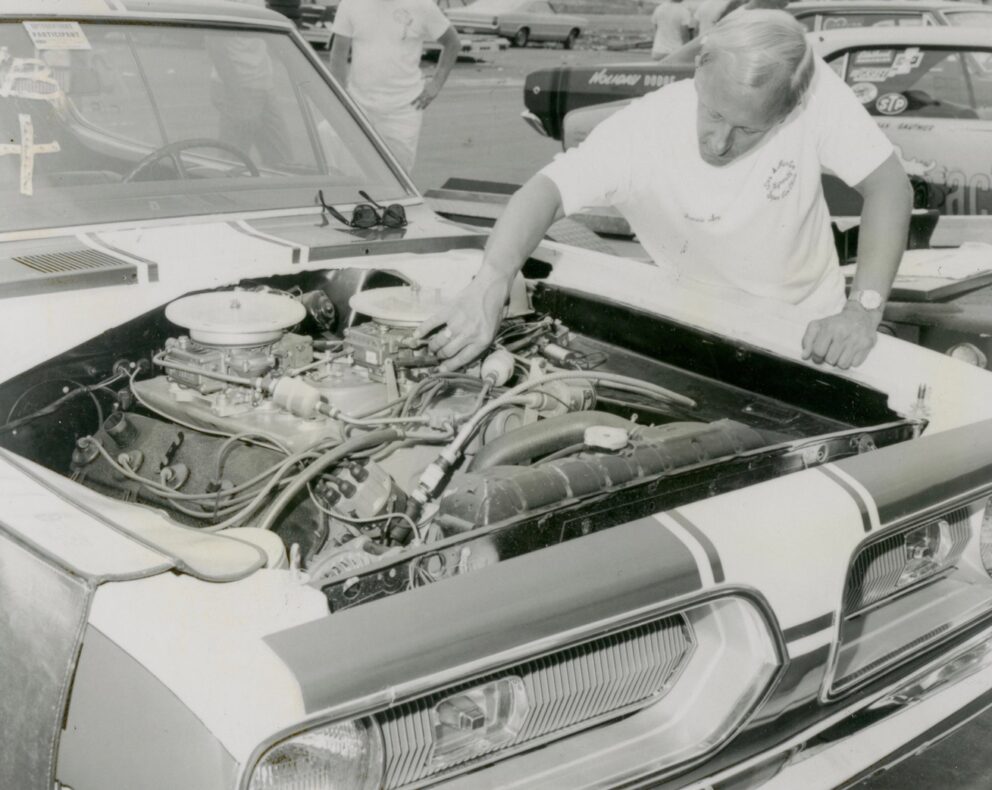
In June of 1968, the Sox & Martin team was getting their B029 car sorted, with Ronnie running a 10.22 at 134.32 mph. S&M was the top team at Plymouth and they were the ones to get the latest trick parts and pieces, and after testing, their factory contract specified them to share information with the other factory cars.
REPRESENTED ON THE TRACK BY OTHER CONNECTED TEAMS
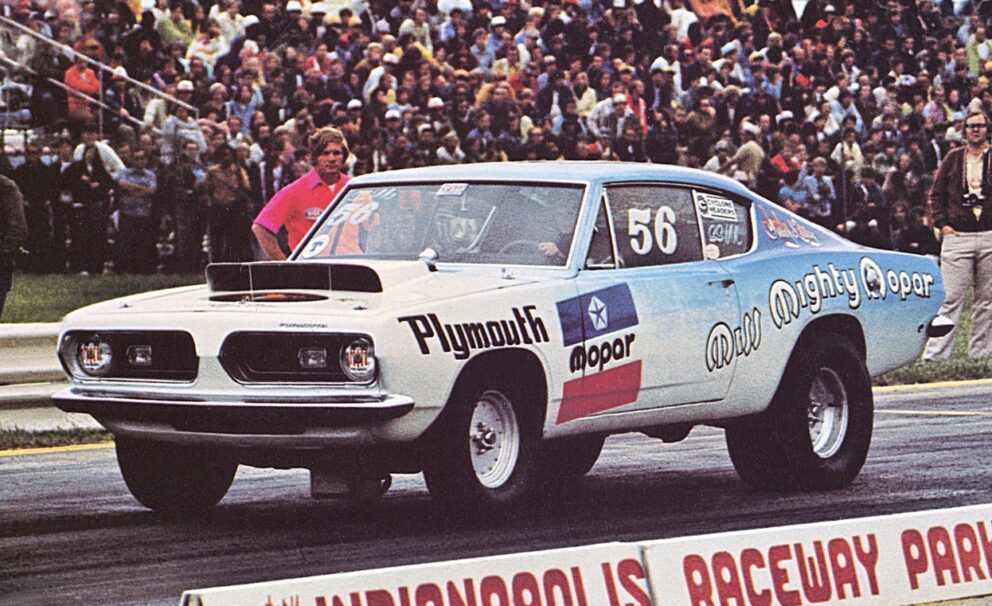
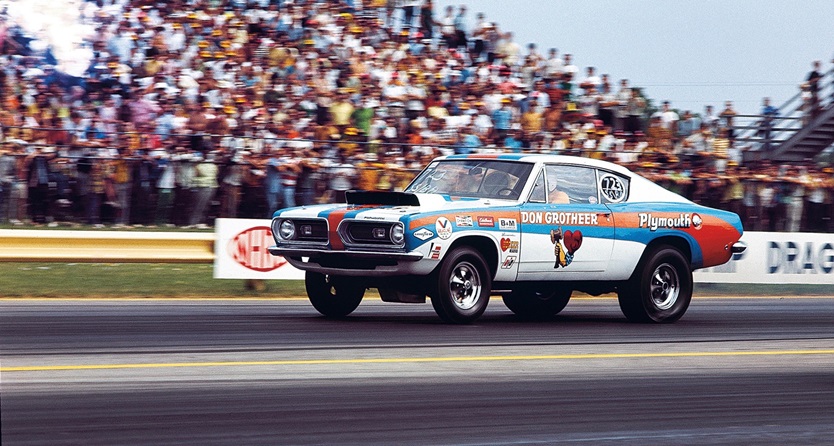
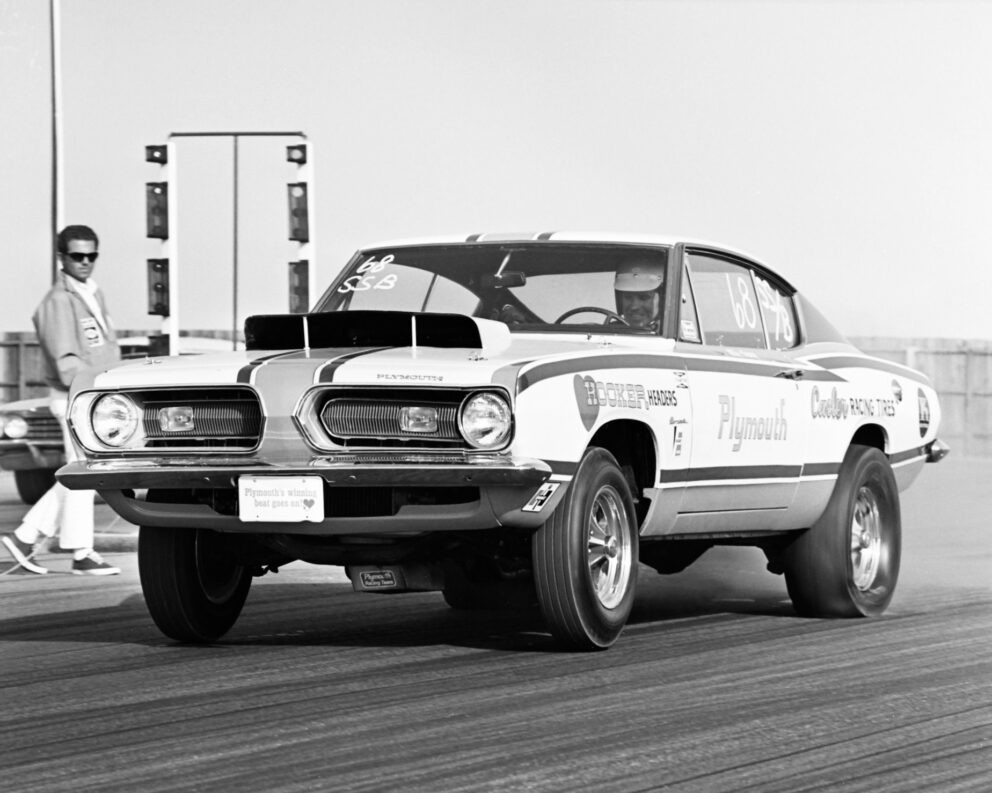
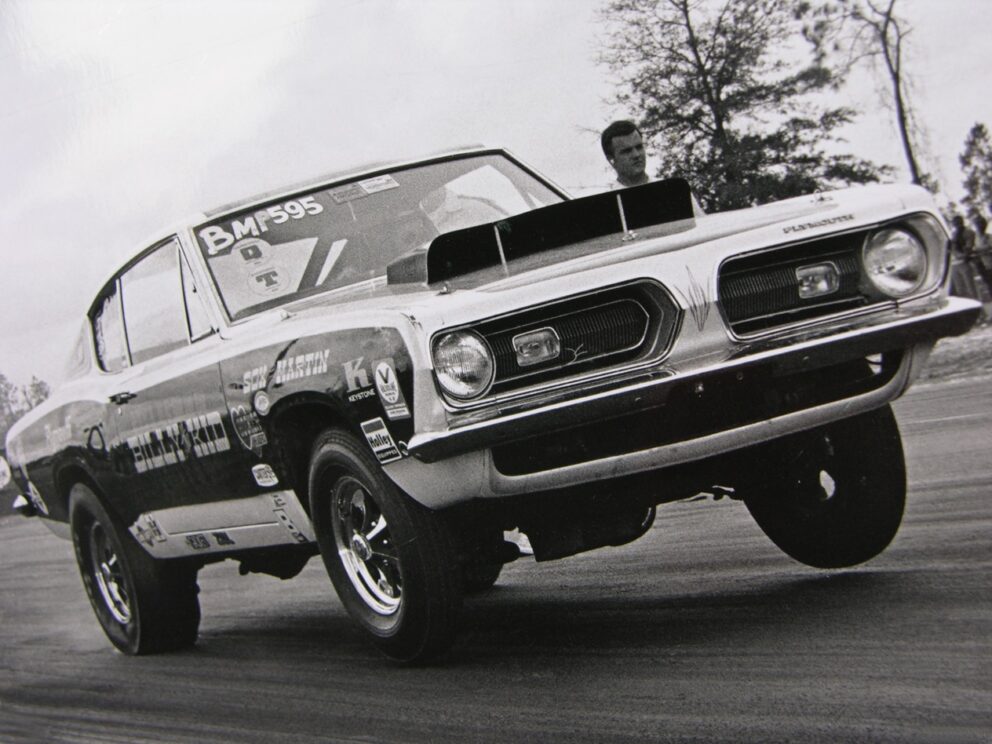
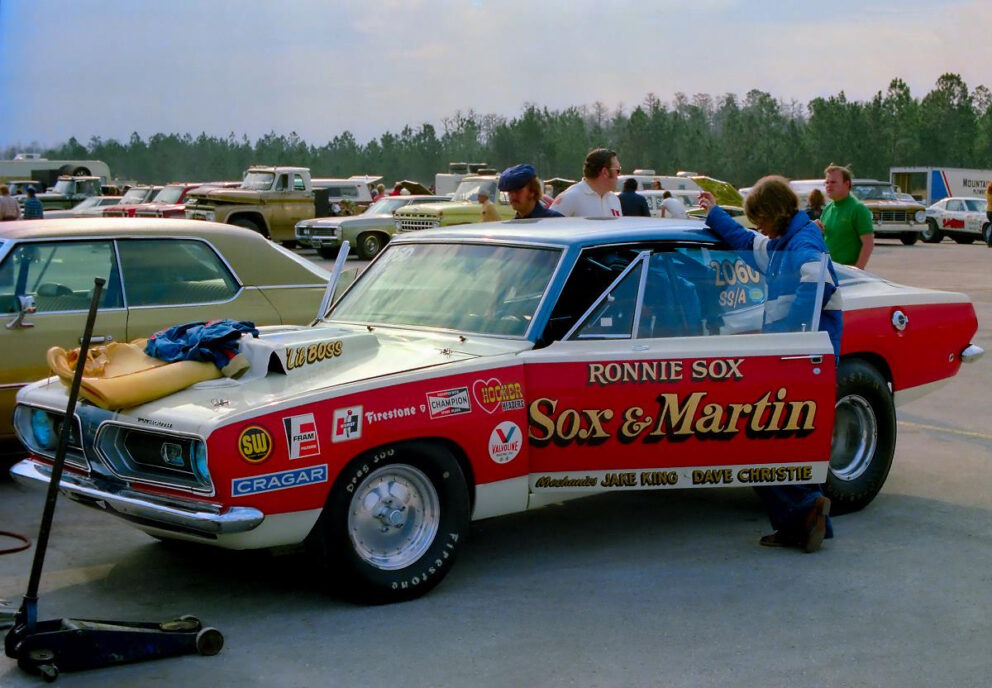
These factory-assisted teams ran the cars with their own engine building and tuning, and they were popular with the fans from the get-go because of their performance!
S&M BOYCOTT CAR – IT’S 1968 ALL OVER AGAIN!
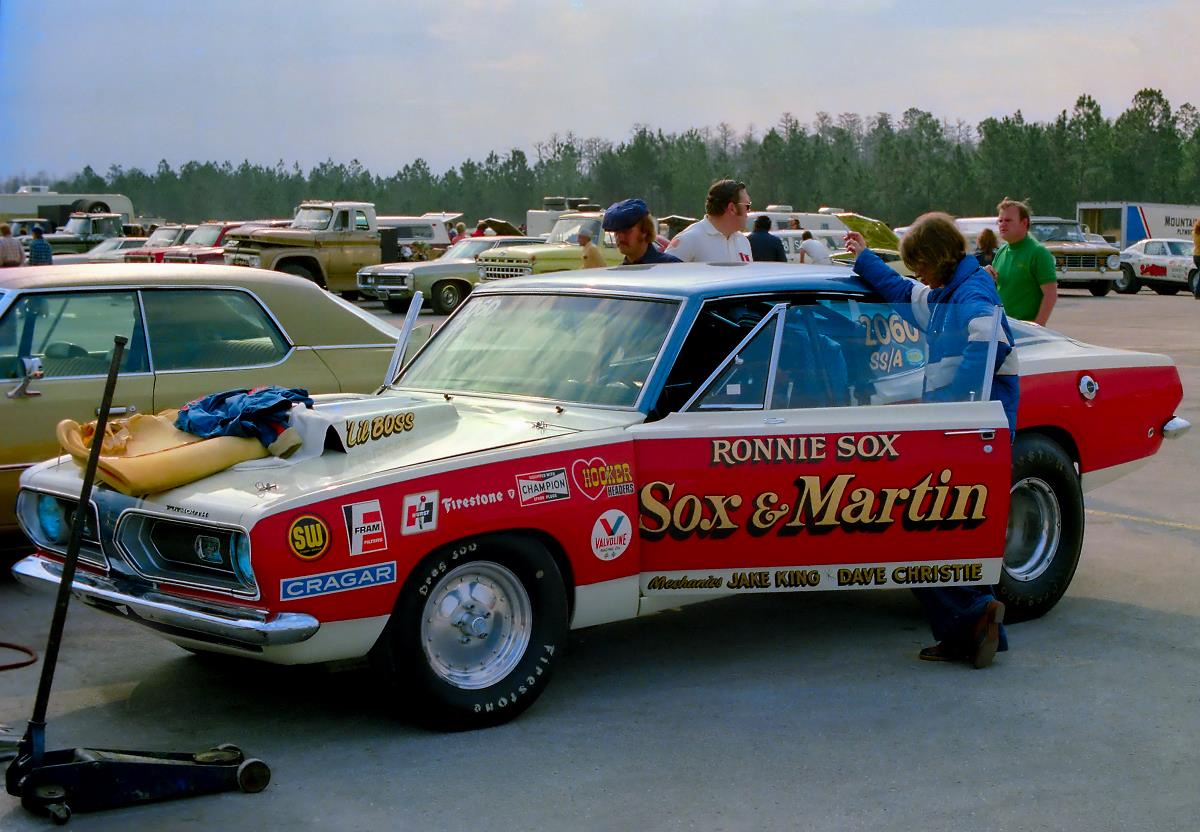
In 1974, when Chrysler racing brass was boycotting the NHRA Pro Stock class because of the added weight that was given to HEMI engine-powered cars, they decided to switch back over to the S/S class for selected factory drivers. Sox & Martin received a well-prepared 1968 HEMI Barracuda for action at NHRA events, running in the SS/A class and updates included a 4-link rear suspension, the switch from heavy Keystone Klassic wheels to lightweight Cragar spin aluminum “Super Trick” wheels as one visual difference from the sixties cars.
THE BOOK
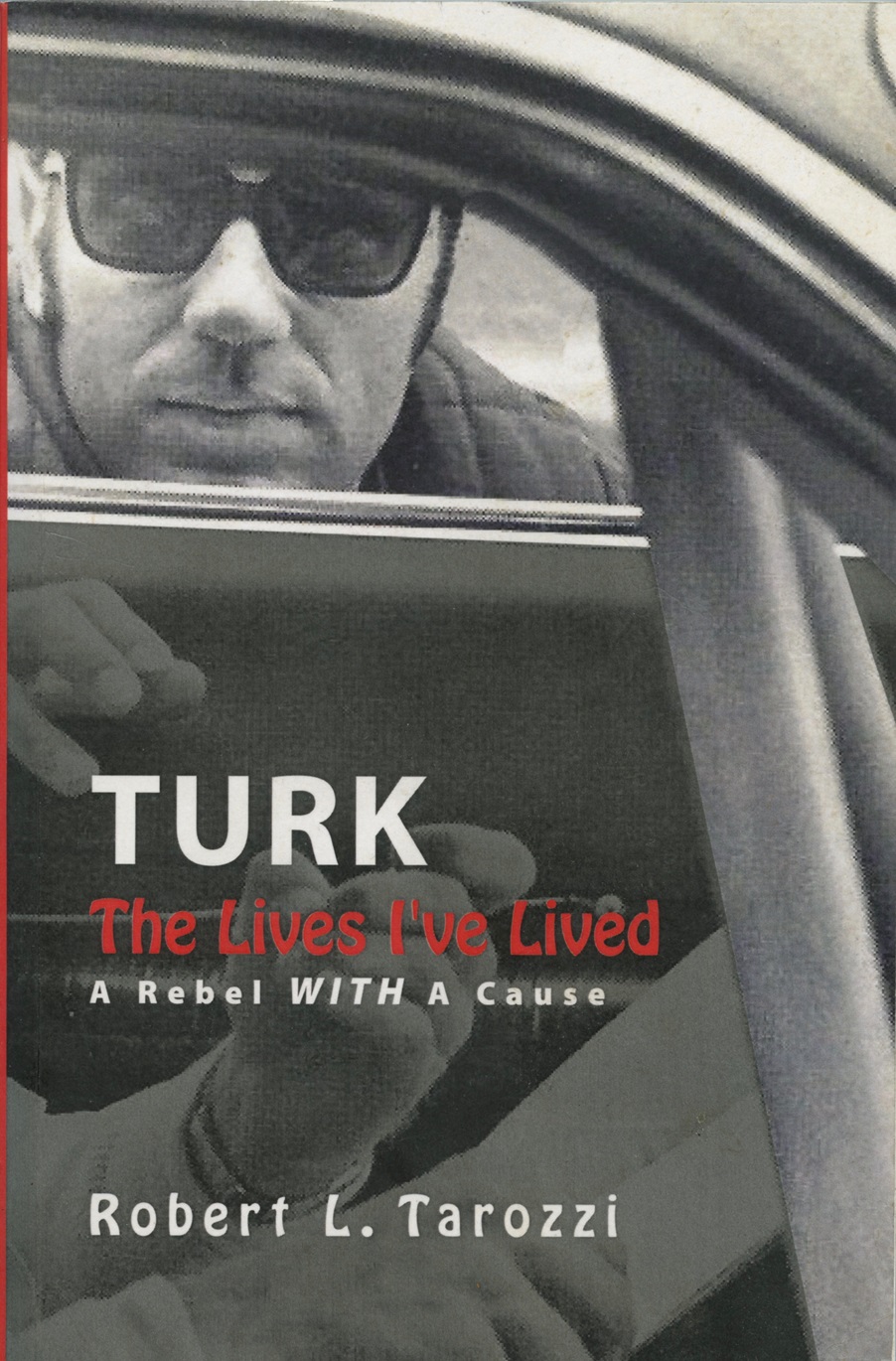
His nickname being “Turk,” Robert Tarozzi put together a book that chronicles his life as a Chrysler race engineer back in the 1960s and 1970s, as well as his time with Hurst designing AMX and Javelin racecars. His journey also involves a lot more, which is detailed in his time at Chrysler, Hurst, Keith Black Racing Engines and numerous other high-performance projects. 246 pages of inside information! ISBN# 978-1-943887-11-8 www.autobooks-aerobooks.com and www.rtarozzi.com
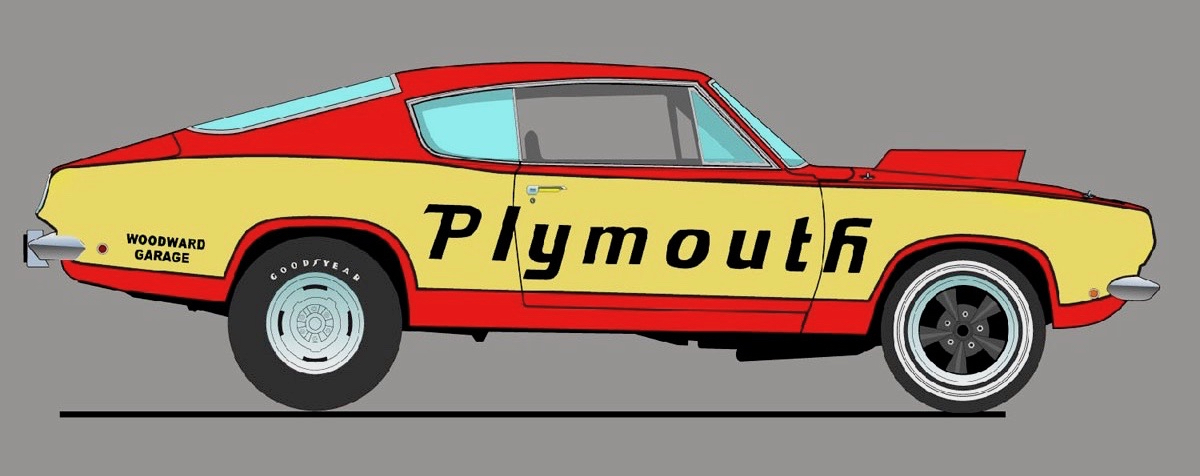
OK, the paint scheme on the #1 prototype car wasn’t exactly something that got rave reviews, however it was all about all-out drag strip performance that was all that mattered.
THE DIECAST OF THE MULE
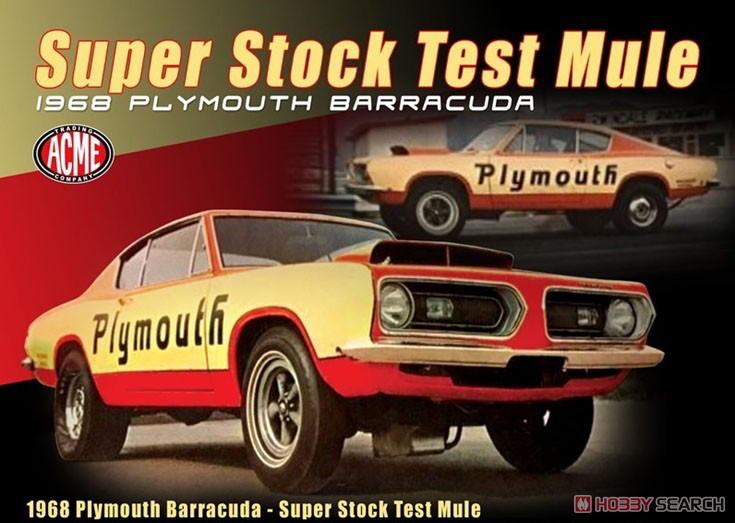
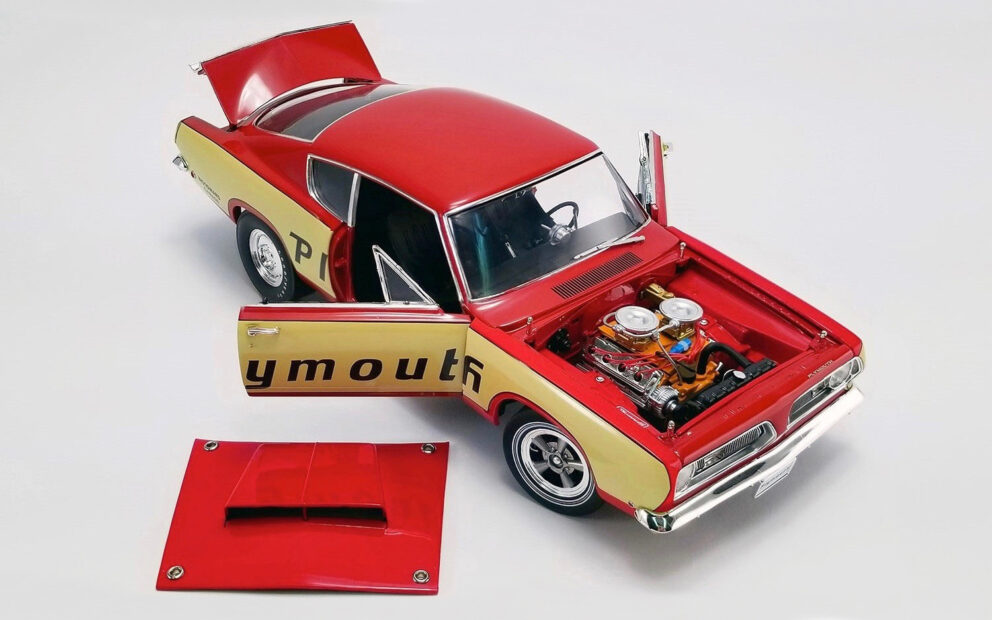
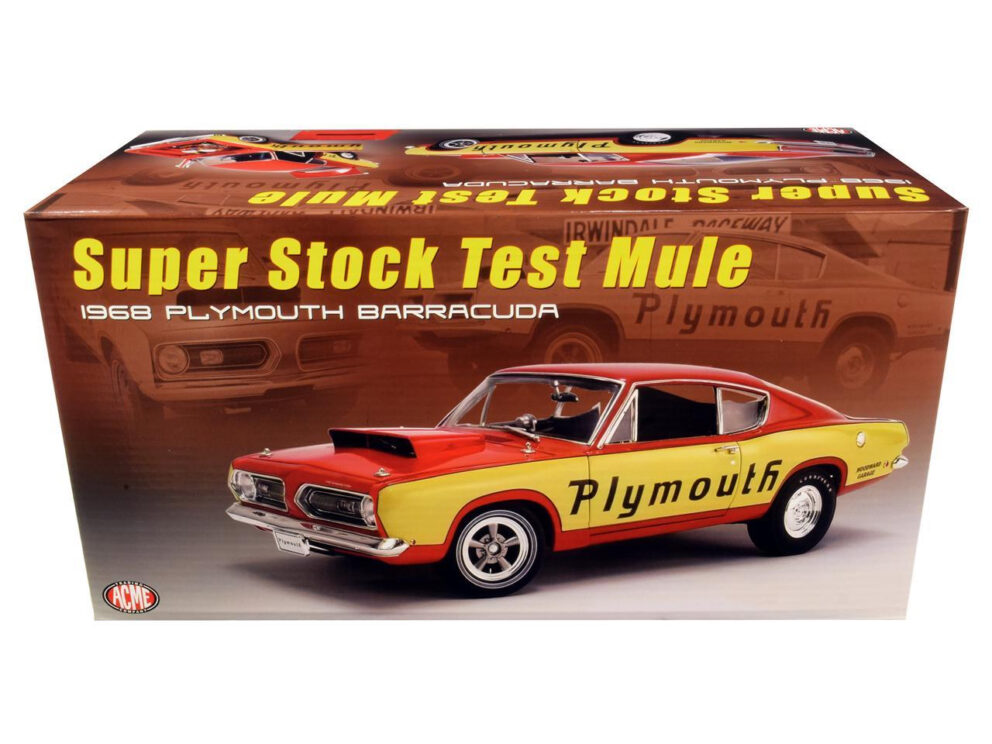
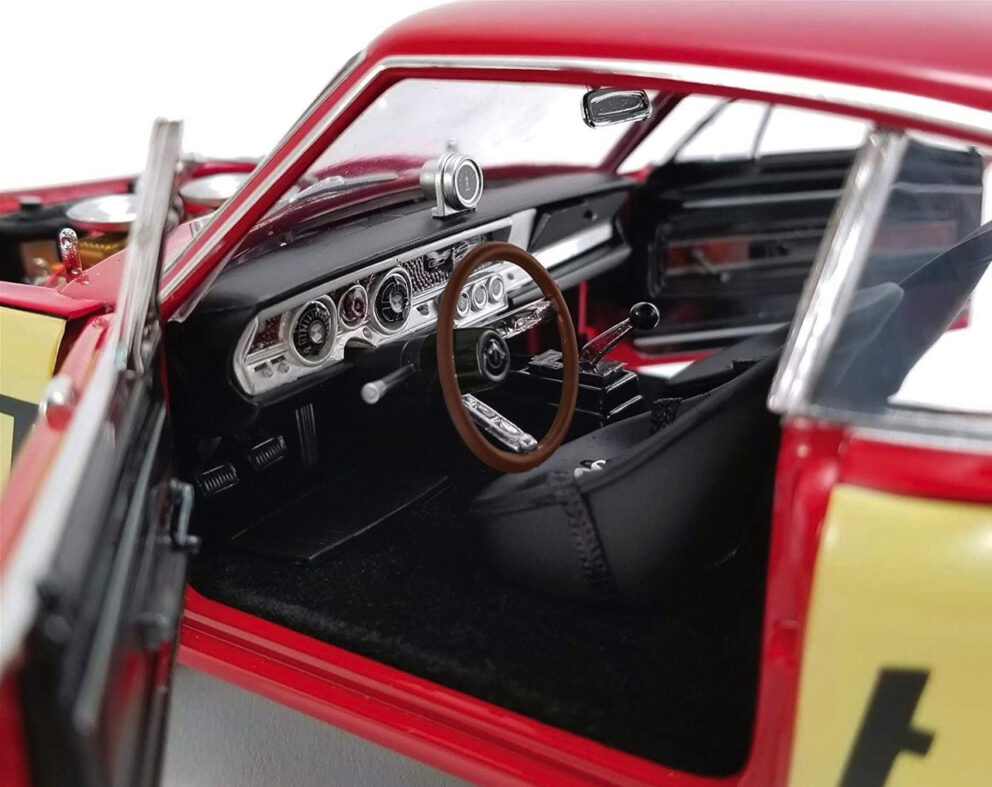
Done in 1:18 scale, the “Mule Car” from ACME measures 10.25 inches in length, has cloth seat belts, real rubber tires, plumbed and wired engine, steerable front wheels. Accurate details, including the fitting of the front side marker lights that were on the 1:1 car. SKU# A1806114
Of course the HEMI engine-powered 1968 Barracudas (and HEMI Darts from 1968) are still to this day being raced, albeit with revised rules and dramatically quicker, faster performance! This story is about explaining the origins of the car’s beginnings and how it all came about through a man known as Turk!
Author: James Maxwell
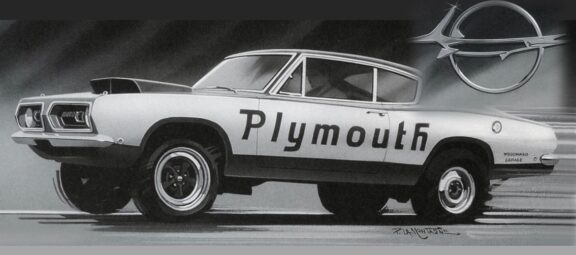
0 Comments